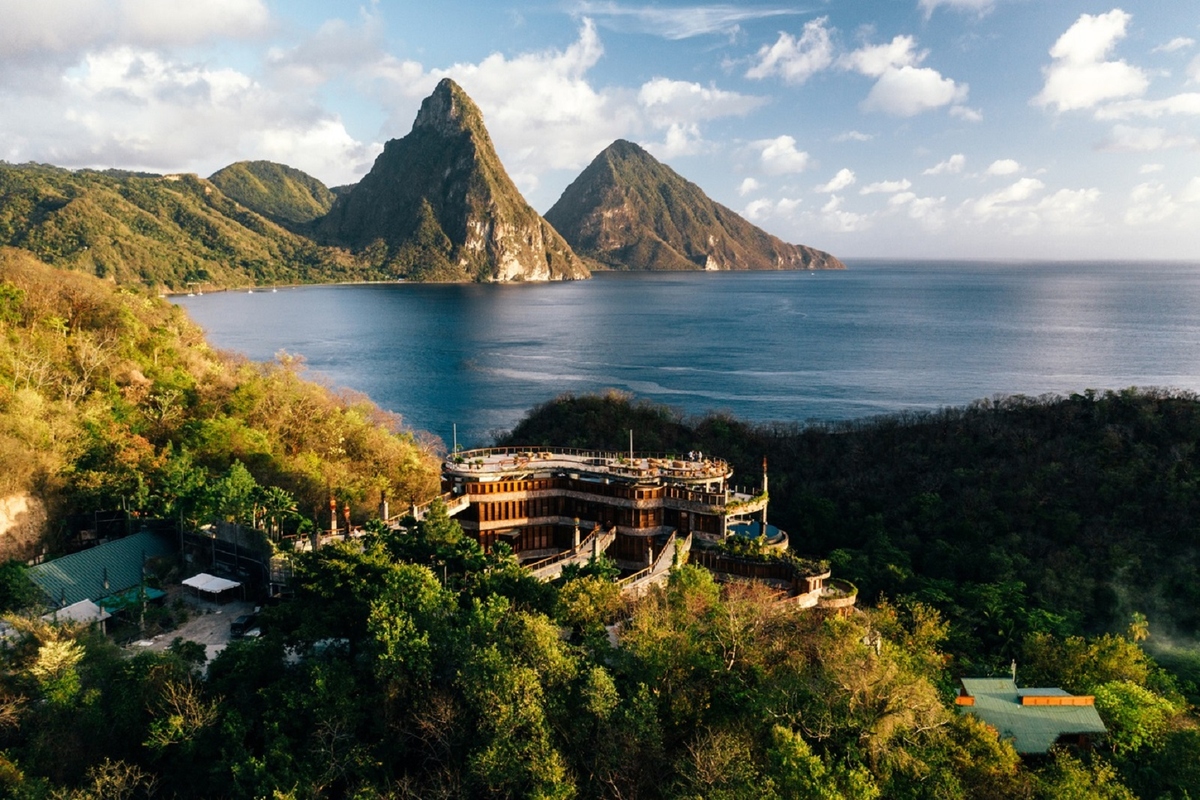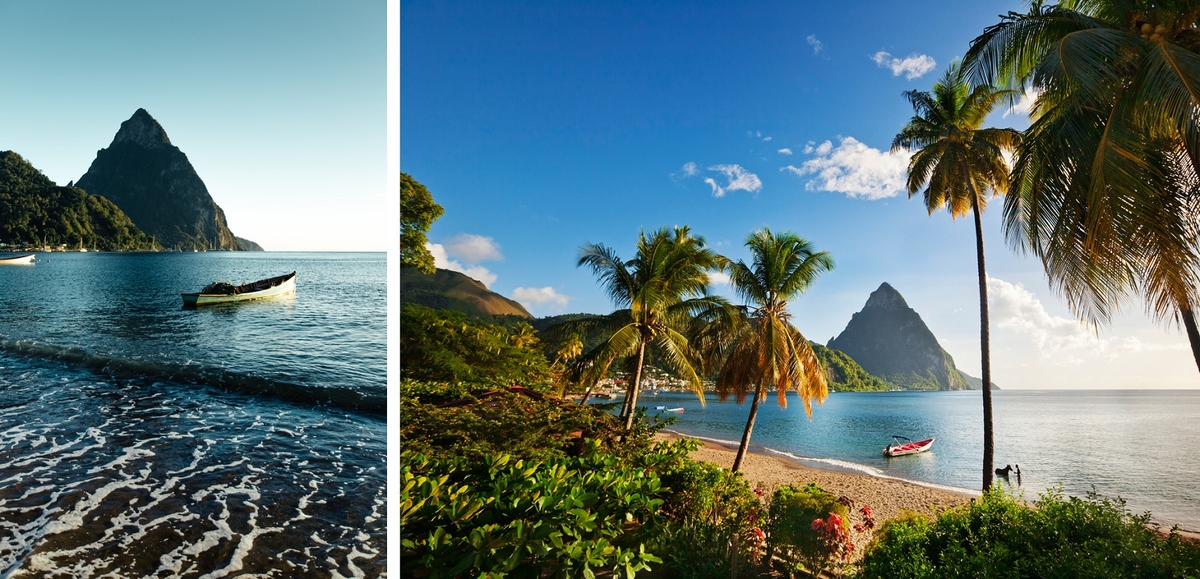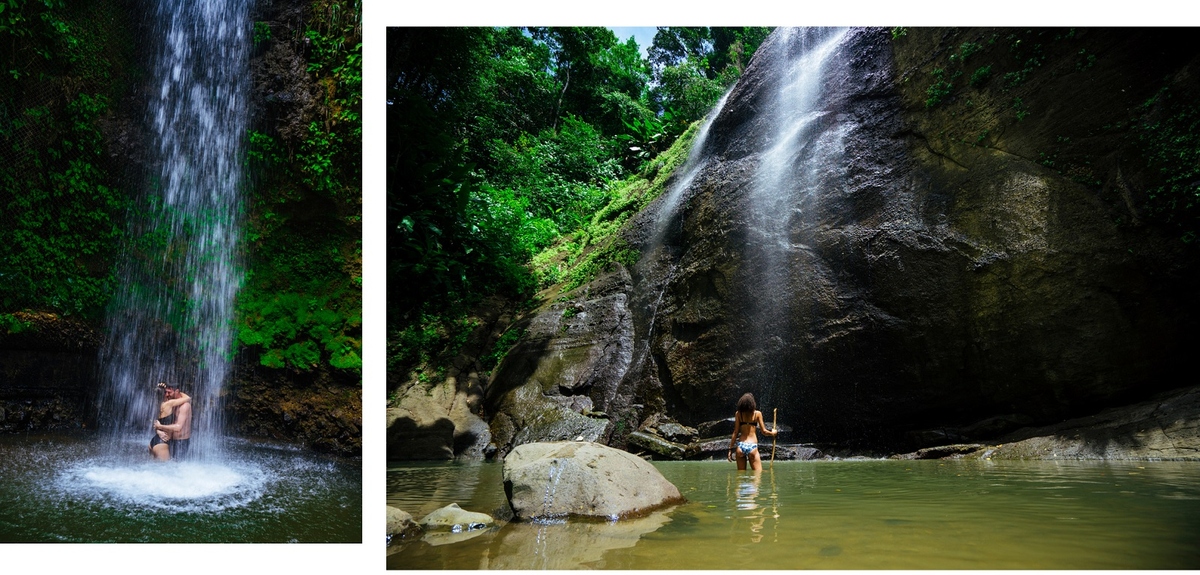
Saint Lucia is a magical, remote island in the Caribbean that sets the most unforgettable stage for luxury weddings and romantic honeymoons. Below, the Saint Lucia Tourism Authority provides us with a quick travel guide for Saint Lucia-bound couples with insider tips on where to go, what to eat, and what to expect when visiting this incredible destination.
A Travel Guide to Saint Lucia
How would you describe the culture of Saint Lucia?
Saint Lucia’s diverse history means it is a melting pot of various cultures. Caribbean culture still has a strong influence on the island, even though it is mixed with African cultures brought over during colonial times. English, French, and Dutch elements also blend with the others on the island, making Saint Lucia culture unique to those who visit.
Visitors who set foot on Saint Lucia can experience this culture and learn about the various eras of the island’s history. Explore ancient archaeological sites from Arawak times or walk along the Old Town of Vieux Fort to feel what it would be like living in Saint Lucia during the 17th and 18th centuries. The history of the island lives on through Saint Lucia’s diverse culture.
What are some unique characteristics about Saint Lucia and its history?
In 1651, a member of the French West India Company purchased the island from the Caribs to make it a French colony, and the English immediately sent 1,000 men to take back the island. This fighting continued until 1814, when the French ceded Saint Lucia to the English. Between 1651 and 1814 the island was owned 7 times by the French and 7 times by the British.

What activities and experiences would you recommend for honeymooners?
De-stress and enjoy a couples massage or spa treatment
Take a champagne sunset cruise
Partake in a candlelit dinner on a private beach
Revive under a rainforest waterfall
Stay in a three-walled sanctuary
Detoxify and rejuvenate in the mud baths at Sulphur Springs in Soufrière
What is the one food or drink that all visitors need to try?
Local cuisine is an eclectic mix of American, European, Indian and Caribbean flavors. The signature meal you should have in Saint Lucia is green figs and salt fish, the island’s national dish. Locals boil unripe bananas and then add salt-cured boiled or flaked cod. It’s a hearty dish made with various herbs and spices. Pair this meal with a plate of fried plantains, a bowl of callaloo soup (a spinach-like soup made from the callaloo plant), or a side of breadfruit. Breadfruit is a staple of Saint Lucia cuisine and resembles a potato, except with a sweeter flavor.
Lucians love to eat, and every meal is full of warmth and ceremony. During your time on the island, let the locals share their favorite meals with you! Street vendors dot the roads where you can pick up snacks on the cheap, or you can visit small shops where one person has perfected a few dishes over the course of several years. While fish is a popular option for many diners, barbecued pork or chicken are also popular with islanders. If you can smell the meat cooking as you approach the restaurant, then you know it must be good.

Are there any special travel or visa requirements for international visitors?
Currently there are COVID-related protocols in place for all travelers to the island, visit www.stlucia.org/covid-19 for details.
What are some of the must-see historical sites that tourists should visit?
THE PITONS
Start your exploration of Saint Lucia’s famous landmarks with the Pitons – two volcanic plugs on the southwestern coast of the island. Each Piton has its own name: Gros Piton (at 2,530 ft high) and Petit Piton (at 2,438 ft high). These landmarks actually inspired the creation of a local beer, Piton, a light, refreshing drink popular with locals and residents alike.
There are multiple ways for visitors to explore these landmarks. You can hike around them and see exotic plants and animals that call the area home, or you can sail around them to see the Pitons from the water. Many guests to Saint Lucia prefer to do both, as they are captivated by the beauty and shape of the dormant volcanoes along the coast.

PIGEON ISLAND
If you want to combine history and nature in your visit, then Pigeon Island is one of the top Saint Lucia landmarks for you. Pigeon Island was a separate isle until 1972, when the government built a causeway between it and the main island for easy access. Pigeon Island is where the infamous pirate, Jamb de Bois, created a camp to ambush Spanish trade ships.
Visitors can also climb around the ruins of Fort Rodney, which was built by the English to fight the French. Hike around the ruins and pass cannons while you watch nature slowly reclaim the island. You can really feel what it was like guarding the island in the 1700s.
Pigeon Island is a National Park of Saint Lucia, and you can find visitors snorkeling, sailing, and diving just off the shores.

SOUFRIÈRE
Of all Saint Lucia’s most famous landmarks, Soufrière is one of the most recognizable. The town’s name comes from the sulfurous aromas created by the volcanoes. Explore the town square and get to know the culture of Saint Lucia (while shopping for a few souvenirs along the way), or head out to some of the natural wonders of the islands. The Saint Lucia Diamond Falls Botanical Gardens are also located in this town, and some visitors use Soufrière as a base to hike out to Toraille to cool off in the natural rainforest.
The best way to find iconic landmarks of Saint Lucia is to ask the people who live here. Everyone on the island has a favorite diving spot, hiking trail, or historic ruin that paints a picture of the island’s culture. These landmarks are a great place to start, but there’s so much more that the island has to offer.
>Visit stlucia.org for more information.


